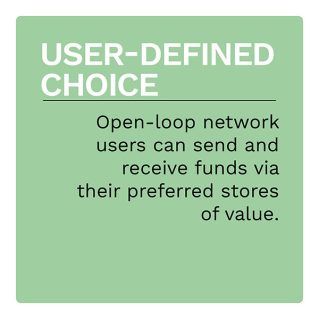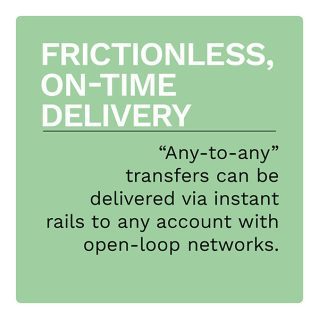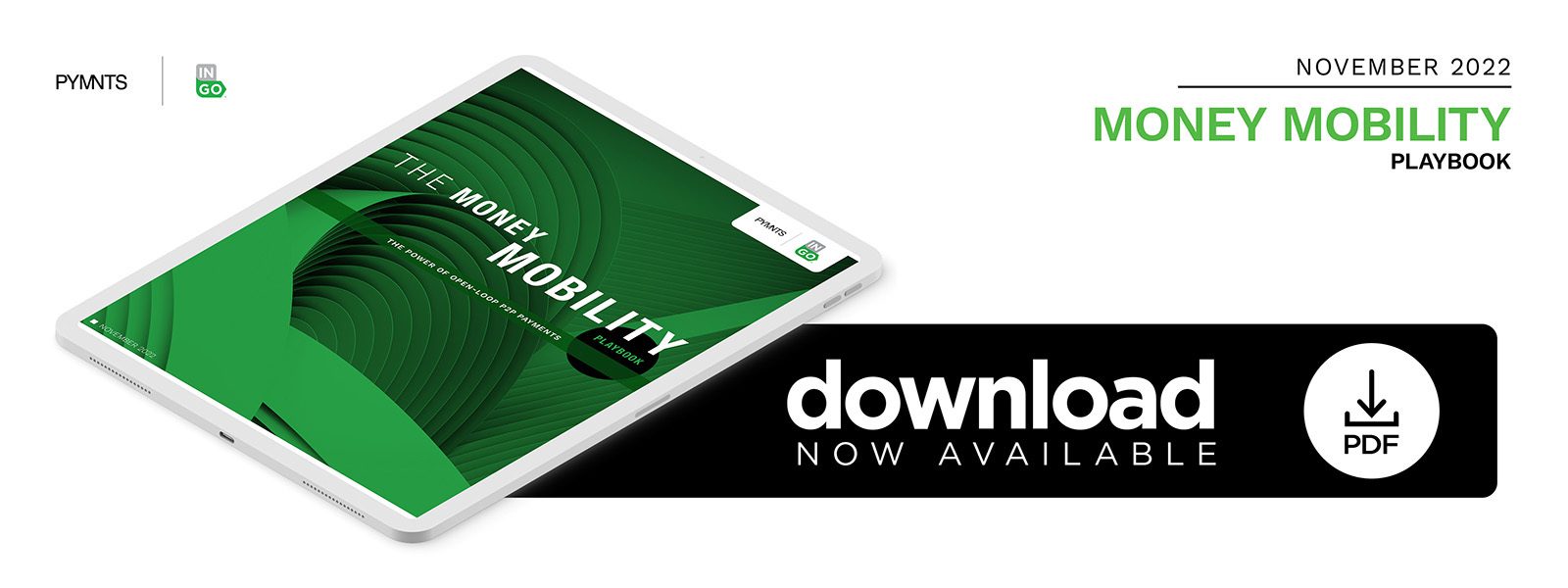Open-Loop P2P Networks Give Issuers Alternatives to Status Quo

Despite substantial advances in digital solutions, consumers still use cards and automated clearing house (ACH) transfers for nearly all their non-cash payments. These are closed-loop systems, lacking the agility and efficiency that today’s consumers and businesses expect.
 By contrast, open-loop peer-to-peer (P2P) payment networks liberate the movement of money by allowing senders to transfer funds natively from whichever accounts they prefer, in real time, without worrying about whether the recipients have access to the same platform. Decoupling sender from receiver resolves the complexity of a digitized payments landscape that burdens consumers and businesses with asymmetric and misaligned preferences for how to pay and be paid.
By contrast, open-loop peer-to-peer (P2P) payment networks liberate the movement of money by allowing senders to transfer funds natively from whichever accounts they prefer, in real time, without worrying about whether the recipients have access to the same platform. Decoupling sender from receiver resolves the complexity of a digitized payments landscape that burdens consumers and businesses with asymmetric and misaligned preferences for how to pay and be paid.
“The Money Mobility Playbook: The Power Of Open-Loop P2P Payments,” a PYMNTS and Ingo Money collaboration, examines why open-loop P2P networks represent the future of P2P and how this architecture allows FinTech players to deliver the convenience and flexibility their customers demand.
Why open-loop P2P matters
 Millions of consumers now conduct even more of their activities online, aided by financial technology innovations that provide shoppers with new payment choices. However, consumers face the challenge of closed-loop P2P payment systems that require extra steps and awkward coordination between senders and recipients.
Millions of consumers now conduct even more of their activities online, aided by financial technology innovations that provide shoppers with new payment choices. However, consumers face the challenge of closed-loop P2P payment systems that require extra steps and awkward coordination between senders and recipients.
Open-loop P2P leverages scalable, cloud-based infrastructure that can be right-sized for financial institutions of all shapes and sizes. This networked solution responds to the changing realities of increasingly digital economies and the corresponding demands of consumers and businesses by facilitating universal connectivity across all platforms and account types, empowering consumers and businesses to send and receive payments to and from all available stores of value.
Deep dive: Open-loop versus closed-loop
Most consumers associate P2P payments digital services with apps such as PayPal, Venmo and Zelle, all of which have closed-loop limitations. Conversely, open-loop P2P payment networks empower both senders and receivers, offering unfettered movement between stores of value, regardless of the banks, apps or other systems they use. Today, no mainstream payment technology offers true open-loop freedom, though some methods go further in this direction than others.
Genuine open-loop P2P payment networks deliver:
• User-defined choice that empowers consumers and business clients to send and receive funds via their preferred stores of value and to change those preferences over time
• Frictionless transfers of value that can be delivered via instant rails to bank accounts, mobile wallets, cross-border entities and even remittance services in foreign markets
• Compliance and data security features that help FinTechs tap into rich, networked data repositories with best-in-class risk analysis tools
FinTechs can build resilience into their business models by ensuring customers can access a native, open-loop P2P payment network.
To learn more about how this architecture allows FinTech players to deliver the convenience and flexibility their customers demand, download the report.


